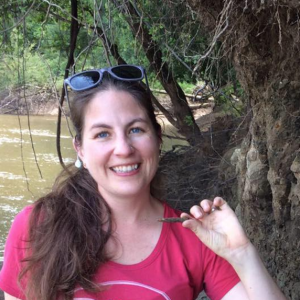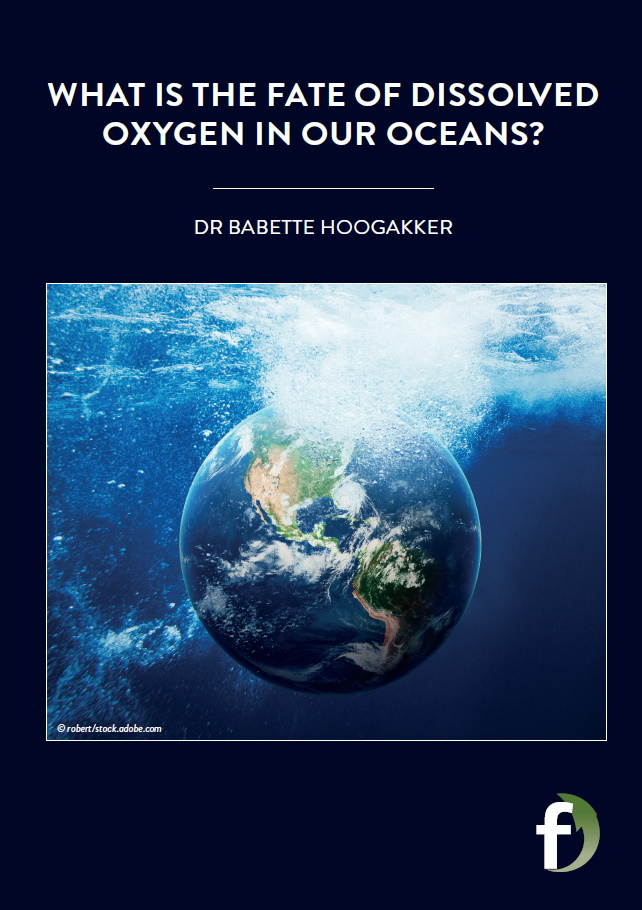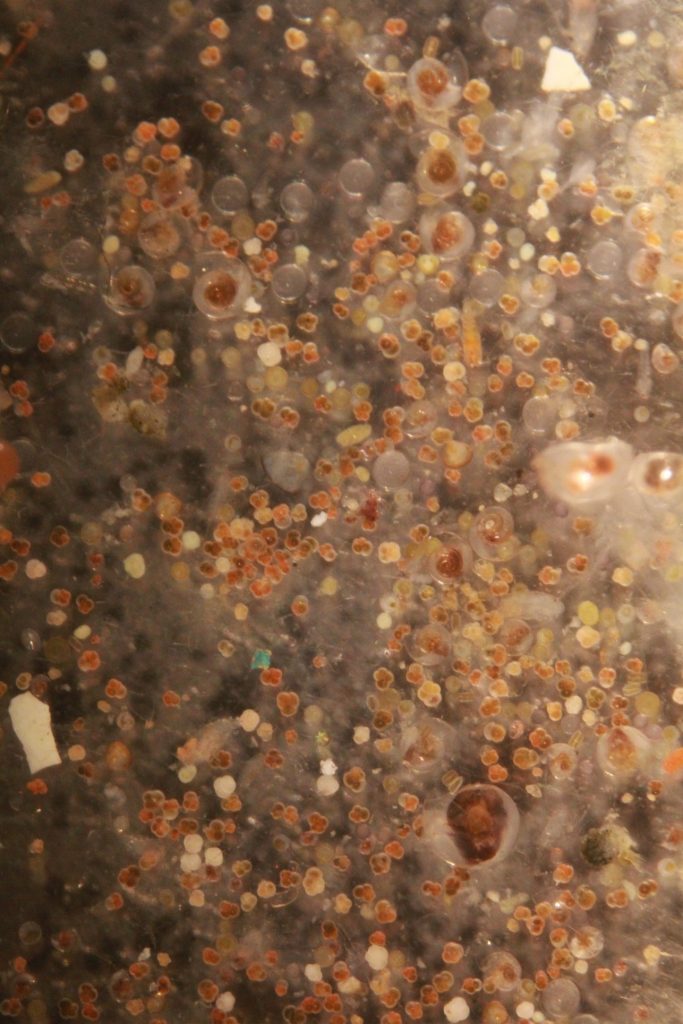What is the fate of dissolved oxygen in our oceans?
Dr Babette Hoogakker, based at Heriot-Watt University in the UK, leads the FARGO project, which studies past dissolved oxygen concentrations in the Pacific Ocean. The aim is to improve understanding of the longer-term seawater oxygen cycle and improve climate models of the future
TALK LIKE A PALAEOCEANOGRAPHER
ANTHROPOGENIC — resulting from human activity
CLIMATE MODELS — big computer models that use maths, physics and chemistry to characterise how energy and matter (solid, gas or fluid) flow between the hydrosphere (oceans, ice, rivers and lakes), atmosphere and land
FORAMINIFERA — amoeba-like, single-celled organisms that live within a shell. These shells can be preserved in sediment
OCEAN DEOXYGENATION — the reduction of the oxygen concentration of the oceans. This can be due to natural causes but, recently, human activities have started to influence this
OXYGEN MINIMUM ZONES — the places in the world ocean where oxygen concentration in the water column is at its lowest
PROXY — when a variable (e.g., past oxygen concentration) cannot be directly measured, scientists can instead measure a proxy, a different variable (e.g., chemical composition of foraminifera) that allows them to infer the variable of interest
SEDIMENT — matter that settles to the bottom of the seafloor
As the vast majority of living organisms on planet Earth will tell you, oxygen is extremely important. In addition to being the Earth’s most abundant element, it is critical to the health of all forms of higher life, including fish and marine organisms. It is, therefore, alarming that oxygen concentrations in seawater have decreased by about 2% over the past 50 years – a process known as ocean deoxygenation.
Ocean deoxygenation threatens the sustainability of marine ecosystems, with the current trend brought about by human-induced global warming and the resultant climate change. For this reason, Dr Babette Hoogakker, based at Heriot-Watt University, is leading a project which studies past dissolved oxygen concentrations in the Pacific Ocean. By developing our understanding of the history of ocean oxygenation, we will be better placed to understand the longer-term oxygen cycle, improve model simulations of future deoxygenation and put solutions in place to remedy this serious issue.
WHAT DOES THE PROJECT INVOLVE?
The seven-year project, entitled ‘Fate of ocean oxygenation in a warming world (FARGO)’, has been established to understand why – and to what extent – oxygen concentrations dissolved in seawater might change in a warming world. Babette and her team are studying dissolved oxygen concentrations in the Pacific Ocean, currently the world’s largest low-oxic water body, through an innovative and dedicated research programme incorporating a novel multi-proxy approach which will inform climate models.
LIMITATIONS OF CURRENT CLIMATE MODELS
The current simulations designed to predict future climates do not all agree. In addition, they fail to adequately describe what we have seen in the past 50 years regarding deoxygenation, suggesting that the models are missing key interactions and factors. “Various hypotheses have been put forward to explain this model-data mismatch. To better understand longer-term oceanic dissolved oxygen concentrations and the key processes that influence this, we’ll need to continue with observational programmes, but this will be a relatively slow process,” explains Babette. “One way to extend the observations is by reconstructing dissolved oxygen levels and drivers in the geological past – this is where FARGO’s research comes in!”
TIME INTERVALS
The team is looking at sediments from three key warm time intervals that cover important periods in the Earth’s history: warmer climates that occurred 4-15 million years ago; the mid-Pliocene Warm Period (3.3 to 3 million years ago); and Pleistocene warm intervals (interglacials of the last ca. 800,000 years). “The longer-term variability (thousands to millions of years) in oxygen levels is not well-understood,” says Babette. “Using deep-sea sediment records, where sediments have accumulated for millions of years, helps form unique resources to reconstruct the environmental conditions of past oceans, and assess seawater oxygen levels and various processes behind any changes.”
FORAMINIFERA
Foraminifera are single-celled organisms which play a crucial role in developing understanding of the evolution of life and past environments on Earth. When the team examines seafloor sediments, there are many foraminifera contained within them. “Foraminifera can provide so much information about the environment they used to live in and have provided a wealth of information about past environmental conditions and climate,” explains Babette. “Studying foraminifera under the microscope is amazing; they are beautiful to look at. If you could inflate them, they would make brilliant Christmas tree decorations!”
The foraminifera Babette and the team study are made of calcium carbonate, the same compound that forms chalk, limestone and marble. By using various chemical analyses, the team can gather information about the age of the samples and the temperature, nutrient and oxygen concentrations that the foraminifera lived in. This helps the researchers build up a picture of what conditions were like at specific times in the past.
CHALLENGES
One challenge of this project is finding the right sediments that contain the right foraminifera from the right area. “While the sediment cores we use are well dated, for our purposes we are looking at very narrow time-windows and we’ve had to carry out some extra work to make sure we are getting reconstructions for that particular time period. A lot of the methods to reconstruct dissolved oxygen levels only work well at lower dissolved oxygen levels,” says Babette. “We focus our reconstructions on areas in the oceans where oxygen levels are low now, which happens in large swaths of the Eastern Pacific Ocean. Getting samples from this ocean basin means we have a much better chance to get meaningful results compared to the Atlantic Ocean where areas characterised by lower oxygen concentrations are a lot less common today.”
SUCCESSES
Over the past couple of years, Babette and her team have carried out a lot of work on developing and testing methodologies that enable them to estimate dissolved oxygen concentrations of past seawater. The various scientific publications resulting from this work provide satisfying recognition of the team’s efforts. The team has also worked to expand its network of researchers and is organising a workshop featuring researchers from all over the world.
IMPACT
In addition to improving understanding of past oxygen concentrations in seawater, the team hopes the insights its research provides will contribute to improving climate models of future oxygen concentrations. “It is very important that we develop a good understanding of this, so that we can better predict what regions are going to be negatively affected by ocean deoxygenation in the future, and why,” says Babette. “Such future projections may be used to develop strategies to slow and, possibly, reverse ocean deoxygenation.”
 DR BABETTE HOOGAKKER
DR BABETTE HOOGAKKER
Associate Professor, The Lyell Centre for Earth and Marine Sciences, Heriot-Watt University, Edinburgh, UK
FIELDS OF RESEARCH: Palaeoceanography, Climate Change
RESEARCH PROJECT: Studying past dissolved oxygen concentrations in the Pacific Ocean
FUNDERS: UK Research and Innovation (UKRI), National Environment Research Council (NERC)
This work is supported by UKRI Future Leaders Grant MR/S034293/1
Reference
https://doi.org/10.33424/FUTURUM294
Fresh plankton tow from the Californian coast containing hundreds of living planktic foraminifera, as well as diatoms, pteropods (‘sea butterflies’) and some plastic debris (photo credit: Catherine Davis)
ABOUT PALAEOCEANOGRAPHY
Palaeoceanography is the scientific study of the history of the oceans and can involve various elements of research, including analysis of the ocean’s sedimentary record, glacial changes and how the Earth’s tectonic plates have moved over time. Babette’s research is focused on past dissolved oxygen concentrations in the Pacific Ocean, but the field of palaeoceanography could take you all over the world.
WHAT IS REWARDING ABOUT RESEARCH IN THIS FIELD?
For Babette, there are a range of different areas that she finds rewarding. “I love engaging with the public and other scientists, as well as contributing to growing knowledge about our Earth system,” she explains. “I was chatting to a quantum informatics scientist recently, commenting on how awesome their research sounded. They said ‘well, your work is helping to save our planet’, which was very nice to hear!”
For Catherine, the feeling of discovering something that has never been seen before is especially gratifying. “Most discoveries are small but making them is such a wonderful feeling and continues to be a powerful motivation for me,” she says. “I find uncovering our place in the natural world as it sits in both space and time to be incredibly rewarding – it is fundamental for tackling the most significant problem of our age, climate change.”
EXPLORE CAREERS IN PALAEOCEANOGRAPHY
• Palaeoceanography is closely related to palaeoclimatology. In the UK, you can join the Paleoclimate Society.
• The Micropalaeontological Society provides information about the application of tiny microfossils for research.
• The average salary for an oceanographer is between £14,000 and £60,000 depending on the level of experience and specific job role.
Babette says that subjects like Earth sciences, maths, computing, physics, chemistry and biology are all useful for various subjects in palaeoceanography. Your pathway will depend on the particular direction you wish to head in, but a solid background in the sciences is important.
You can study for a degree in oceanography or a related subject, like ocean science, geology or environmental science.
Employers are increasingly looking for postgraduate qualifications, like a master’s or PhD. They also value experience of working in marine science or oceanography research.
HOW DID BABETTE BECOME A PALAEOCEANOGRAPHER?
Growing up, I was interested in chemistry and animals. At secondary school, I was also interested in economics, mathematics and physics. But, at the end of secondary school, I didn’t know if I would enjoy doing any of those subjects at university, so I decided to have a year to think about it, during which I had lots of different jobs. I knew very early on in that year that I wanted to keep my brain engaged and go to university! In the end, I chose a subject that incorporates all the topics I enjoyed at secondary school: physical geography.
I loved going to university. I love learning new things, but it was also nice to interact with people who had similar interests. I really enjoy the outdoors and, as part of my physical geography degree, we visited different places and conducted lots of fieldwork. It was my geology and sedimentology teacher at Utrecht University (J.R. Boersma) who inspired and encouraged me to become a scientist. I realised that I wanted to work in an area of research that helps us understand how our planet works, so I pursued a PhD in marine geology following my degree. Since then, enthusiasm, perseverance, patience and tenacity have made me successful as a scientist.
I am proud to have received two fellowships (NERC and UKRI-FLF) and a Philip Leverhulme Prize, but mostly I am proud of the people who I have had the joy to work with. Two PhD candidates from my group are about to submit their PhD theses, and I feel proud and humbled to have mentored them to this point. My ambitions are to expand my network and research horizons further and continue mentoring awesome young scientists.
MEET CATHERINE

Dr Catherine Davis is an assistant professor of marine, Earth and atmospheric sciences at North Carolina State University in the US and has similar research interests to Babette.
HOW HAS YOUR WORK LED TO YOUR CURRENT RESEARCH ON OXYGEN MINIMUM ZONES (OMZ)?
I came to be interested in oxygen minimum zones through my interest in ocean acidification and carbon cycling in the ocean. The ocean is one of the largest storage sites for carbon and we understand that the uptake of excess anthropogenic carbon in the oceans has profound consequences both for ocean life and in regulating the response of the planet to increasing atmospheric carbon. Where carbon is located in the ocean is strongly influenced by biology – primary producers that take up carbon and release oxygen, and organisms which take up oxygen and release carbon. This means that oxygen distribution in the ocean is basically a mirror image of carbon. Oxygen minimum zones are the fascinating extreme case of where there is little to no oxygen available. This type of extreme environment is fascinating to me.
WHAT DO WE KNOW ABOUT OMZS IN THE PAST?
We know that OMZs probably expanded during periods of rapid warming in the past, although we have a lot to learn about to what extent and the exact mixture of mechanisms that caused this. Many factors contribute to OMZs in a complex way that is frequently difficult to disentangle. Understanding how OMZs have changed in the past will allow us to make better predictions of how they will change in the future.
WHAT ENVIRONMENTAL INFORMATION IS PRESERVED IN THE SHELLS OF OMZ FORAMINIFERA?
The abundance of certain species specially adapted to an OMZ environment can tell us about where OMZs existed in the past. Measurable physical features of shells can indicate how much oxygen was available in the past. As foraminifera calcify using elements taken directly from the water around them, their shells also record the chemistry of the seawater they grew in. That means that the chemistry of shells can also hold clues to the temperature, oxygenation, and/or source of OMZ water.
WHY IS THE EASTERN EQUATORIAL PACIFIC SUCH A SIGNIFICANT LOCATION FOR YOUR RESEARCH?
The Eastern Pacific is the site of the largest OMZ in the modern ocean and is particularly interesting to me for two reasons. Firstly, it is at the confluence of many deep waters that formed from surface waters at locations across the globe and each with unique histories. Secondly, some of these old deep waters rise to the surface in the Eastern Pacific. This means it is one of the places where deep, low oxygen, high carbon waters regularly interact with the surface ocean and the atmosphere.
WHAT DOES A TYPICAL DAY IN THE LAB LOOK LIKE FOR YOU?
Because foraminifera are so small, I spend a lot of time at a microscope! Some days could also be spent on board a ship, collecting foraminifera or making measurements of ocean conditions, or in a more typical chemistry lab doing chemical preparation or analyses of samples.
WHAT SUCCESSES HAVE YOU HAD, SO FAR?
Some of my favourite moments of success have come in understanding how living foraminifera and other fossil-forming organisms make their living in the ocean. Understanding life histories has been key for developing a better understanding of how individuals living in the past interacted with and recorded their environments.
WHAT ARE THE NEXT STEPS FOR YOUR RESEARCH?
I would like to better understand how foraminifera and other fossil forming organisms respond to change in the recent past, including but not limited to oxygenation. I want to use past records to contextualise our current moment of climate change with other periods of long-term change that we understand primarily through the fossil and other indirect records.
BABETTE AND CATHERINE’S TOP TIPS
01 Believe in yourself. Sometimes it helps to make a long-term plan, but don’t be afraid to change directions if it feels like the right thing to do.
02 Seek out people to work with who are supportive and willing to lend you their time.
03 Follow what you are passionate about and let that motivate you to gain the skills you need.
Do you have a question for Babette or Catherine?
Write it in the comments box below and Babette or Catherine will get back to you. (Remember, researchers are very busy people, so you may have to wait a few days.)











